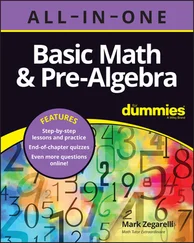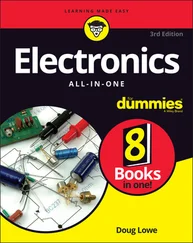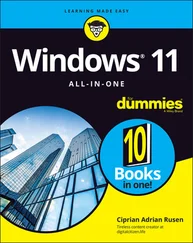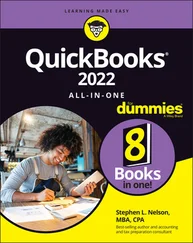In this book, you find helpful advice for navigating the blockchain world and cryptocurrencies that run them — from the ins and outs of wallets, exchanges, Bitcoin, and Ethereum to investing in cryptocurrencies and even mining your own.
You don’t have to read the book cover to cover. Just flip to the subject that you’re interested in.
As you dip into and out of this book, feel free to skip the sidebars (shaded boxes) and the paragraphs marked with the Technical Stuff icon. They contain interesting but nonessential information.
Within this book, you may note that some web addresses break across two lines of text. If you’re reading this book in print and want to visit one of these web pages, simply key in the web address exactly as it’s noted in the text, pretending as though the line break doesn’t exist. If you’re reading this as an e-book, you’ve got it easy — just click the web address to be taken directly to the webpage.
Some of the web addresses are affiliate links, meaning that if you click them and start using a company’s services through that specific web address, the author may earn an affiliate payment for making the introduction.
We didn’t want to make too many assumptions about you and your experience with cryptocurrency, blockchains, mining, and legal matters, but we do assume the following:
You have a computer, a smartphone, and access to the Internet.
You know the basics of using your computer and the Internet, and how to download and install programs.
You know how to navigate through menus within programs, how to find files on your computer, and how to create folders.
You’re new to blockchain and you aren’t a skilled programmer. (Of course, if you are a skilled programmer, you can still get a lot out of this book — you just may be able to breeze past some of the step-by-step guidelines.)
You may have heard of, or even purchased, some cryptocurrencies (like Bitcoin or Ether, for example), but you don’t really know how they work.
Although you may have invested in other markets like the stock market before, you aren’t necessarily familiar with the terminology and the technical aspects of trading and investing in cryptocurrencies.
You are unfamiliar with cryptocurrency mining but are interested to know more and determine whether it’s something you want to undertake.
Note: If you don’t have high-speed access to the Internet, you may want to get it before diving into this book. You need high-speed access to be able to work with many of the valuable online tools that we recommend.
Throughout the margins of this book are icons drawing your attention to certain bits of information. Here’s what those icons mean.
 The Tip icon marks tips and shortcuts that you can use to make your life with cryptocurrency easier.
The Tip icon marks tips and shortcuts that you can use to make your life with cryptocurrency easier.
 The Remember icon marks the information that’s especially important to know — the stuff you’ll want to commit to memory.
The Remember icon marks the information that’s especially important to know — the stuff you’ll want to commit to memory.
 When you see this icon, you know the information is of a highly technical nature. You can skip over these icons without missing the main point of the topic at hand.
When you see this icon, you know the information is of a highly technical nature. You can skip over these icons without missing the main point of the topic at hand.
 Watch out when you see this icon! It marks critical information that may save you headaches — or tokens.
Watch out when you see this icon! It marks critical information that may save you headaches — or tokens.
In addition to the material in the print or e-book you’re reading right now, this product also comes with some access-anywhere content on the web. Check out the free Cheat Sheet for more on the topics covered in the book. To get this Cheat Sheet, simply go to www.dummies.com and type Cryptocurrency All-in-One For Dummies Cheat Sheetin the Search box.
The Dummies series tells you what you need to know and how to do the things you need to do to get the results you want. Readers don’t have to read the entire book to learn about a topic. Like all good reference tools, this book is designed to be read when needed and it’s divided into several parts.
If you’re interested in investing, for example, you can head to Book 5to learn about risk management, strategy development, and the whole industry in general. Book 1provides an overview of the world of cryptocurrencies, and Book 2is your gateway to the blockchain technology.
Book 3takes a deep dive into Bitcoin, which is the oldest cryptocurrency and probably the most well-known. Book 4lays the foundation of Ethereum and teaches you, in clear language, how to design and write your own software for the Ethereum blockchain environment.
If you want to delve into cryptocurrency mining, check out Book 6, which can help you decide if and how you’re going to begin mining, including which is the right cryptocurrency for you to mine.
Book 1
Cryptocurrency Basics
Contents at a Glance
1 Chapter 1: What Is a Cryptocurrency? Beginning with the Basics of Cryptocurrencies Gearing Up to Make Transactions Making a Plan Before You Jump In
2 Chapter 2: How Cryptocurrencies Work Explaining Basic Terms in the Cryptocurrency Process Cruising through Other Important Crypto Concepts Stick a Fork in It: Digging into Cryptocurrency Forks
3 Chapter 3: Introducing Cryptocurrency Wallets Defining Cryptocurrency Wallets Looking at Different Types of Wallets Choosing a Crypto Wallet Keeping Your Wallet Secure
4 Chapter 4: Different Types of Cryptocurrencies Celebrating Celebrity Cryptocurrencies by Market Cap Cryptocurrencies by Category
Chapter 1
What Is a Cryptocurrency?
IN THIS CHAPTER
 Looking at the what, why, and how of the advent of cryptocurrencies
Looking at the what, why, and how of the advent of cryptocurrencies
 Getting an overview of your first steps before starting your crypto journey
Getting an overview of your first steps before starting your crypto journey
So you’ve picked up this book, and your first question is probably this: “What the heck is a cryptocurrency, anyway?” Simply stated, a cryptocurrency is a new form of digital money. You can transfer your traditional, non-cryptocurrency money like the U.S. dollar digitally, but that’s not quite the same as how cryptocurrencies work. When cryptocurrencies become mainstream, you may be able to use them to pay for stuff electronically, just like you do with traditional currencies.
However, what sets cryptocurrencies apart is the technology behind them. You may say, “Who cares about the technology behind my money? I only care about how much of it there is in my wallet!” The issue is that the world’s current money systems have a bunch of problems. Here are some examples:
Payment systems such as credit cards and wire transfers are outdated.
In most cases, a bunch of middlemen like banks and brokers take a cut in the process, making transactions expensive and slow.
Читать дальше
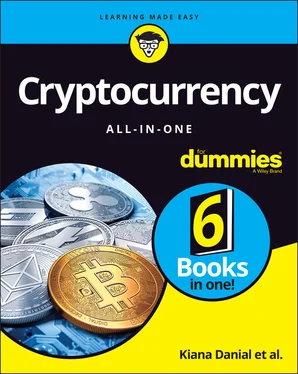
 The Tip icon marks tips and shortcuts that you can use to make your life with cryptocurrency easier.
The Tip icon marks tips and shortcuts that you can use to make your life with cryptocurrency easier. The Remember icon marks the information that’s especially important to know — the stuff you’ll want to commit to memory.
The Remember icon marks the information that’s especially important to know — the stuff you’ll want to commit to memory. When you see this icon, you know the information is of a highly technical nature. You can skip over these icons without missing the main point of the topic at hand.
When you see this icon, you know the information is of a highly technical nature. You can skip over these icons without missing the main point of the topic at hand. Watch out when you see this icon! It marks critical information that may save you headaches — or tokens.
Watch out when you see this icon! It marks critical information that may save you headaches — or tokens. Looking at the what, why, and how of the advent of cryptocurrencies
Looking at the what, why, and how of the advent of cryptocurrencies
